 |
North
High School Wall of Honor
Joseph William Naab, Jr.
Class of June, 1930 |
 |
 |
| Research
done by Claradell Shedd, Class of 1953. |
| Joseph
William Naab, Jr. |
|
Joseph graduated in the June, 1930
North High class. He enlisted in the US Coast Guard on September 20,
1937 in Des Moines, IA. His service number was 1574. Joseph's next
of kin was listed as Mrs. Anna G. Naab, 1018 Callanan Courts, Des
Moines, IA.
|
| Joseph William Naab, Jr. |
 |
| Year |
|
Rank |
|
Status |
 |
| June, 1930 |
|
Graduated |
|
Graduated from North High
School, Des Moines, IA. ived at 1018 Callanan Courts in Des Moines,
IA |
| 1930-1932 |
x |
 |
x |
University of Iowa |
| September,
1933-September, 1937 |
x |
US Coast Guard |
x |
Coast Guard Academy in
New London, CT. Graduated first in his class in 1937
(picture) |
| September
20, 1937 |
x |
US Coast Guard/
Ensign |
x |
Enlisted in Coast Guard
in Des Moines, IA. Appointment as Ensign |
| 1937 |
x |
Family |
x |
Married Elizabeth Stromberg |
| 1937 |
x |
Training |
x |
USCGC Eagle (WIX-327) |
| 1938 |
x |
US Coast Guard |
x |
First tour was aboard
the USCGC Alexander Hamilton (WPG-34) on Bering Sea Patrol in
Alaska |
| 1940 |
x |
US Coast
Guard/
Ensign |
x |
1940 Census
shows domicile as Boston, MA on USG Cayuga as Ensign |
| date |
x |
US Coast Guard |
x |
Service in California,
Connecticut, Michigan, Maine, Washington, D.C. Maryland, Massachusetts/Antartica,
and Washington State. During WWII, assigned to convoy duty in
the North Atlantic on the USCGC Ingham. |
| date |
x |
US Coast Guard |
x |
USCGC Mackinaw (WAG-83) |
October, 1942-
October, 1944 |
x |
 |
x |
Master's Degree in Engineering from
MIT while taking a break from North Atlantic patrols during WWII |
| date |
x |
US Coast
Guard |
x |
Experiences on commissioning
details: Engineer Officer of the CGC Winnebago, instructor at
the Coast Guard Academy, Commanding Officer of the USCGC Yakutat,
and stretch at the Coast Guard Yard, and you have to answer to
why the Eastwind "Knows no barrier." |
| 1952 |
x |
US Coast
Guard |
x |
Aboard the USCGC Yakutat
out of Portland, ME. Rescued four seamen from the bow of a tanker
which had broken in half. Twenty minutes after the last man had
been saved, the section sank. |
| February
1, 1959 |
x |
US Coast
Guard/
Captain |
x |
Promoted to Captain |
| 1960+ |
x |
US Coast
Guard |
x |
USCGC Eastwind to include
Christmas in Antarctica. |
| March 21, 1961 |
x |
US Coast Guard |
x |
Operation Deepfreeze completed. |
| April 10, 1961 |
x |
US Coast Guard |
x |
To Columbo, Ceylon. Eastwind was
first ship to take part in the International Indian Ocean Survey.
(1962-1964). Operation Monsoon. |
| November
5, 1961 |
x |
US Coast
Guard |
x |
Mock Mutiny on way to
McMurdo Sound, Antarctica (picture
and text) |
| 1962-63 |
x |
US Coast Guard |
x |
Rome; St Peter's Basilicia (picture) |
| September
2, 1964 |
x |
US Coast
Guard/
Captain |
x |
Physical disability. Discharged
in13th Coast Guard District, Seattle, WA |
| 1973 |
x |
 |
x |
Taught physics and mathematics
at Mitchell Junior College in New London, CT until retirement
in 1973 |
December
12, 1980
|
x |
Civilian |
x |
Deceased in Brunswick,
Maine. |
| aft December
12, 1980 |
x |
Buried |
x |
Arlington National Cemetery;
Arlington, VA |
|
|
USCGC Eagle (WIX-327); Three-masted sailing Barque
USCGC Eagle (WIX-327 (formerly Horst Wessel) is a 295-foot (90
m) barque used as a training cutter for future officers of the United
States Coast Guard. She is the only active commissioned sailing vessel
in American military service, and one of only two commissioned sailing
vessels, along with USS Constitution. She is the seventh Coast Guard
cutter to bear the name in a line dating back to 1792, including the
Revenue Cutter Eagle, which famously fought the British man-of-war
Dispatch during the War of 1812.
Each summer, Eagle deploys with cadets from the United
States Coast Guard Academy and candidates from the Officer Candidate
School for periods ranging from a week to two months. These voyages
fulfill multiple roles. The primary mission is training the cadets
and officer candidates, but the ship also performs a public relations
role for the Coast Guard and the United States. Often, Eagle makes
calls at foreign ports as a goodwill ambassador.
The ship was built as the German sail training ship
Horst Wessel in 1936; it served to train German sailors in sail techniques
until decommissioned at the start of World War II. The vessel was
given anti-aircraft armament and re-commissioned in 1942. At the end
of the war, Horst Wessel was taken by the U.S. as war reparations.
USCGC Alexander Hamilton (SPG-34)
USCGC Alexander Hamilton (WPG-34) was a Treasury-class United
States Coast Guard Cutter. She was named after the first U.S. Secretary
of the Treasury, Alexander Hamilton, who was mortally wounded in a
duel with Aaron Burr. Sunk after an attack by a German U-boat in January
1942, the Hamilton was the U.S. Coast Guard's first loss of World
War II. On January 29, 1942, the Hamilton was torpedoed on the starboard
side by the German submarine U-132, which had been patrolling the
Icelandic coast near Reykjavík. The explosion killed twenty
men instantly and the total death toll was 26. After she capsized
on January 30, salvage attempts were abandoned and the American destroyer
USS Ericsson fired upon the wreck three times to send her to the bottom
of the sea, 28 miles (45 km) from the coast.
USCGC Ingham (WHEC-35)
USCGC Ingham (WHEC-35) is one of only two preserved
Treasury-class United States Coast Guard Cutters. Originally Samuel
D. Ingham, she was the fourth cutter to be named for Treasury Secretary
Samuel D. Ingham. She was the most decorated vessel in the Coast Guard
fleet and was the only cutter to ever be awarded two Presidential
Unit Citations.
Ingham served with distinction during World War II
on convoy duty. Protecting ships ferrying vital supplies to Britain,
Ingham battled stormy weather, German U-boats, and enemy aircraft.
On 15 December 1942, during one crossing, Ingham engaged and sank
the enemy submarine U-626.[3] After 1944, Ingham served as an amphibious
flagship and she would later take part in three campaigns in the Pacific
Theater. Ingham was the last active warship in the US fleet with a
U-Boat kill.
USCGC Mackinaw (WAGB-83)
USCGC Mackinaw (WAGB-83) is a 290-foot (88 m) vessel specifically
designed for ice breaking duties on the Great Lakes. LR number:
6119534.
Mackinaw was homeported in Cheboygan, Michigan during
active service. Due to Mackinaw's age and expensive upkeep, the cutter
was decommissioned and replaced with a smaller multipurpose cutter
USCGC Mackinaw (WLBB-30), which was commissioned in Cheboygan the
same day.
In 2002 the crew of this cutter painted and refurbished the Fourteen
Foot Shoal Light.
The old Mackinaw moved under its own power on 21 June 2006 from the
port of its decommissioning to a permanent berth at the SS Chief Wawatam
dock at the ship's namesake port, Mackinaw City, Michigan where she
now serves as a museum ship known as Icebreaker Mackinaw Maritime
Museum.
USCGC Yakutat (WAVP-380)
USCGC Yakutat (WAVP-380) was a United States Navy Barnegat-class
small seaplane tender in commission from 1944 to 1946. Yakutat tended
seaplanes in combat areas in the Pacific during the latter stages
of World War II. After the war, she was in commission in the United
States Coast Guard from 1948 to 1971 as the Coast Guard cutter USCGC
Yakutat (WAVP-380), later WHEC-380, seeing service in the Vietnam
War during her Coast Guard career. Transferred to South Vietnam in
1971, she was commissioned into the Republic of Vietnam Navy as the
frigate RVNS Tr?n Nh?t Du?t (HQ-03). When South Vietnam collapsed
in 1975 at the end of the Vietnam War, she fled to the Philippines,
where the Philippine Navy took custody of her and cannibalized her
for spare parts until discarding her in 1982.
Log of Operations
on USCGC Eastwind (WAGB-279)
USCGC Eastwind (WAGB-279) (more
pictures)
The Coast Guard Cutter Eastwind was commissioned in
San Pedro, CA on June 3, 1944. The 269-foot icebreaker, destined for
nearly 20 Polar expeditions, completed her shakedown cruise on July
14, 1944. A month later, she reached her home port of Boston, MA.
Her first mission in WWII was to Northeast Greenland. There she fought
through 10-foot thick ice to rescue two men in a small boat, lost
from an allied patrol. Purshing still further northweard, she sighted
a German weather station on October 1, 1944. During the next 15 days,
landing parties from the Eastwind captured the station, its valuable
documents, and a German expeditionary vessel. The rest of the war
was spent working in thick polar ice and ferreting out various enemy
infiltrations. At the war's end, the icebreaker made four peacetime
trips to Greenland. In 1948, she smashed a shipping path in New York's
icebound Hudson River, alleviating serious supply shortages in upstate
communities.
From 1950-1954, the cutter made numerous and varied trips to the northern
and Arctic regions. Then in 1955, participation in the first Operation
Deepfreeze. Since then, she has divided her time between Arctic and
Antarctic operations.
On November 3, 1960, the Cost Guard Icebreaker Eastwind prepared to
chase the setting sun across the Pacific after transiting the Panama
Canal enroute to Antarctica to participate in Operation Deepfreeze
61 (March 22, 1961). The next port of all for the glistening white
269-foot cutter would be Christchurch, New Zealand, jumping off spots
for the icy wastes of McMurdo sound. A search for a downed jet pilot,
the saving of a life at sea, and a midnight buzzing by a plane thought
at first to have been a Cuban bomber, highlighted the Eastwind's voyage
to Panama. Two days out of Boston, the ship, which carries two helicopters,
was directed to assume on-scene command of a search force consisting
of 12 aircraft and 4 other ships in an attempt to locate a downed
Air Force F-84 jet pilot, lost on a flight from Bermuda. The search
was called off after it was ascertained that the pilot probably had
not been able to bail out. The following morning the Eastwind received
a radio message that a Merchant Seaman on the Norweigian Tanker Borge
was in serious condition with bleeding ulcers. A rendezvous was made
and, despite a vicious swell, a small boat with Ensign William B.
Hewitt of Needham Heights, MA, was lowered and eight oarsmen stroked
for the Borge. In the boat was the Eastwind's cotor, SAS Lt. David
R. Herr of New Providence, PA. After emergency medical treatment was
rendered, the Borge headed for the nearest port, and the boat returned
to the Eastwind. Forty-seven tense minutes passed before it could
be hoisted abord due to the rough condition of the sea.
The Eastwind's skipper, Captain Joseph W. Naab, Jr. of Freeport, ME
congratulated the men on the job well done. "You have performed
this operation with great skill and courage, and in the finest tradition
of the sea" he said. The Eastwind then resumed her course for
the Carribean, where she was to pass within four and a half miles
of the east coast of Cuba. It was midnight, off of Cuba, when an unidentified
aircraft was picked upon the radar. Flying without lights of any kind,
it made a low pass over the sip and awakened many crew members slpping
in the cool air topside. "Here comes a Castro" one of the
men shouted. There was stillness for a moment as the presumed Cuban
bomber thundered in for another low run at almost mast height. Then
it flashed a recognition light and laughter sounded around the decks.
It was only a US P2V Aircraft on routine patrol.
The Eastwind docked briefly at Rodman Naval Base in the Canal Zone
to take on mail, supplies, and fresh water, and several crew members
jokingly talked of going ashore to buy air conditioners. "That's
one of the problems of an icebreaker" explained Captain Naab.
"We're insulated for cold, but we spend about a month in tropical
weather getting there. It gets might hot."
High spot of the three-week voyage across the Pacific was to occur
when the ship crossed the Equator and those who had never been across
before would get initiated. Then a week in Christchurch, New Zealand,
preparing for the big push to Antarctica, where the massive icebreaker
was scheduled to smash a path for shipping supplying scientific stations
there.
From another source:
Eastwind made history when she became the first cutter to ever circumnavigate
the globe in 1960-61. She departed Boston on 25 October 1960, transited
the Panama Canal, crossed the Pacific Ocean, visited New Zealand and
then participated in Operation Deep Freeze in Antarctica. She sailed
home via the Indian Ocean, Suez Canal, the Mediterranean Sea, through
the Straits of Gibraltar, and arrived back at Boston in May, 1961.
From September 1961 to March 1962 Eastwind participated in Operation
Deep Freeze to the Antarctic. From November 1963 to March 1964 Eastwind
participated in Operation Deep Freeze to the Antarctic. From November
1964 to April 1965 Eastwind participated in Operation Deep Freeze to
the Antarctic. From June to August 1965 Eastwind re-supplied Arctic
bases. From November 1965to April 1966 Eastwind participated in Operation
Deep Freeze to the Antarctic. In March 1966 the ship's helicopter detached
to aid in flood relief in Argentina. On 7 February 1967 Eastwind rescued
the Danish Antarctic supply ships Nella Dan and Thala Dan from heavy
ice 40 miles off Budd Coast of Antarctica. Nella Dan had been trapped
for one month and Thala Dan for two weeks. |
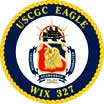 |
2013.jpg) |
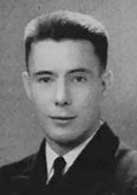 |
|
US Coast Guard Cutter (WIX-327) |
|
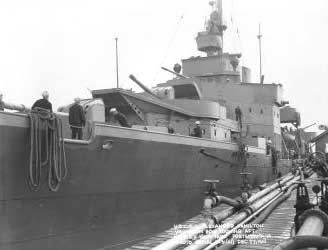 |
USCGC Alexander Hamilton
(WPG-34).
Naab served on this vessel in the Bering Sea in Alaska. |
|
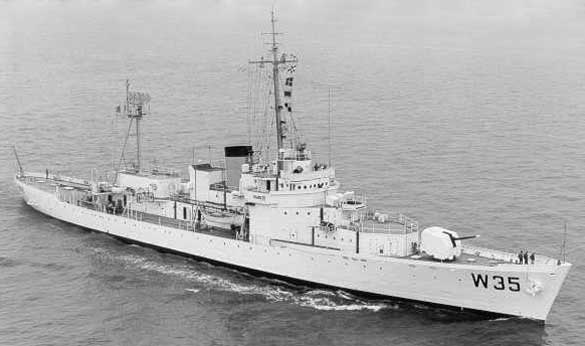 |
| USCGC Ingham (WHEC-35) |
|
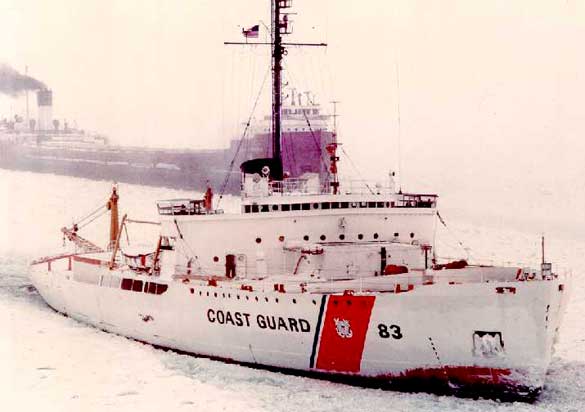 |
| USCGC Mackinaw (WAG-83);
Icebreaker on the Great Lakes |
|
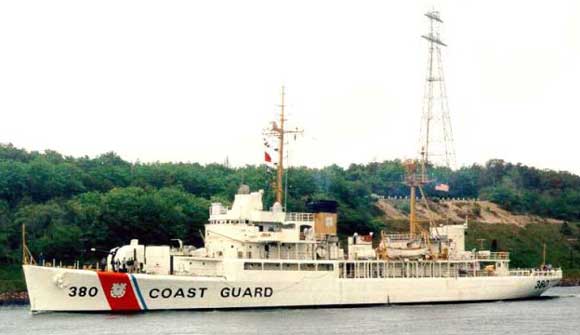 |
| USCGC Yakutat (AVP-32;
1944-1948; WAVP-380; 1948-1966) |
|
| USCGC Yakutat (WAVP-380)
Awards, Citations and Campaign Ribbons |
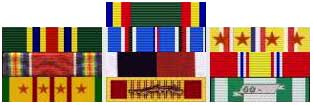 |
Precedence
of awards is from top to bottom, left to right
Top Row: Navy Unit Commendation
Second Row: Navy Meritorious Unit Commendation - American Campaign
Medal - Asiatic-Pacific Campaign (4)
Third Row: World War II Victory Medal - Navy Occupation Service
Medal (with Asia clasp) - National Defense Service Medal
Fourth Row: Vietnam Service Medal (4) - Republic of Vietnam Gallantry
Cross Unit Citation (4) - Republic of Vietnam Campaign Medal |
|
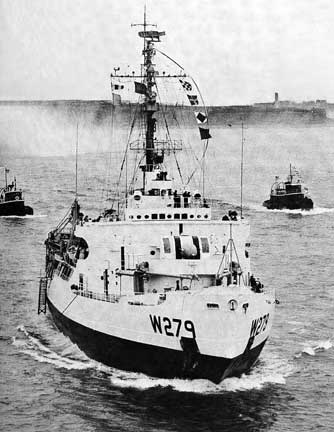 |
|
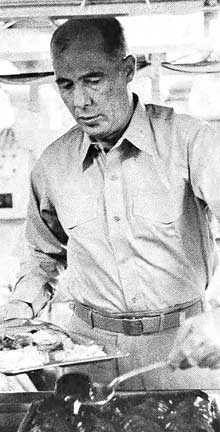 |
| 1963-64:
USCGC Eastwind (WAGB-279) entering Boston Harbor |
|
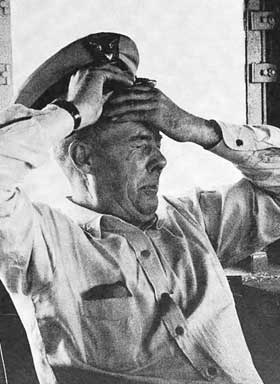 |
|
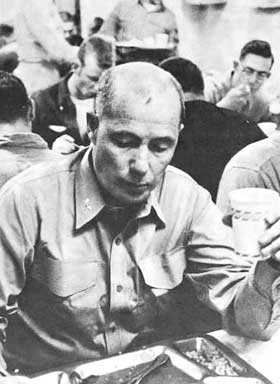 |
| Thanksgiving
1960: USCGC Eastwind/Crossed International Dateline |
|
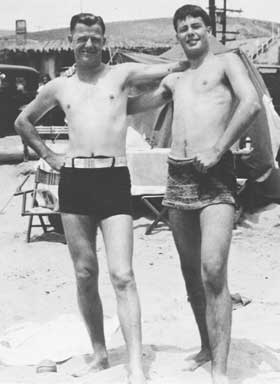 |
|
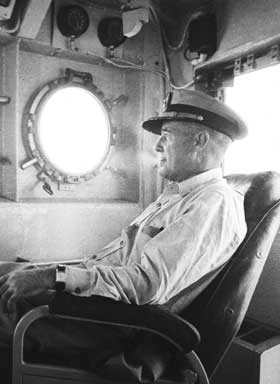 |
| 1932: Joseph Naab,
Sr. and Joseph Naab, Jr. in CA |
|
1961: Captain on the
bridge of the Eastwind |
|
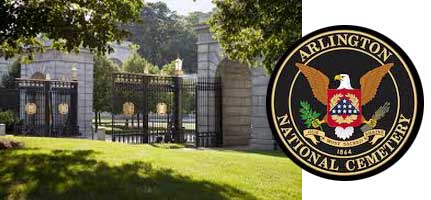 |
align="center"
| Arlington National Cemetery;
Plot: Columarium No 1; Memorial #34239965 |
|
Joseph
William Naab, Jr.
Captain
United States Coast Guard |
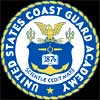
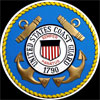

|
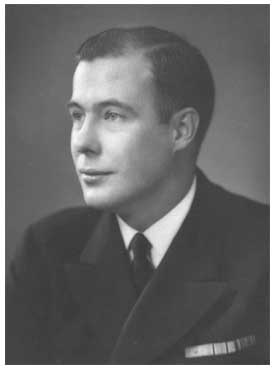
|

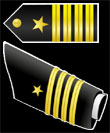 |
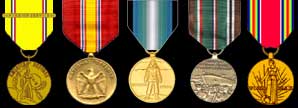
 
American Defense with clasp, National Defense Service Medal, Antarctic
Service
Europen-African-Middle Eastern Campaign Medal, WWII Victory Medal,
Commendation CINCLANTFLT, Expert Pistol and Rifleman |
|
| References |
(1)
Information was obtained from the Records on Military Personnel
Who Died, were Missing in Action, or Prisoners of War as a result
of the Vietnam War. This document can be found online at the National
Archives and Records Administration at http://www.archives.gov/.
(2) The comprehensive list of names from North High's 1893-2018
graduation classes are from Claradell Shedd's North Des Moines
High School website. The names of North High School graduates
can be found online at: http://www.ndmhs.com/.
Joseph William Naab, Jr.'s 1930 class page is: http://ndmhs.com/pages/yearclass1930.html. |
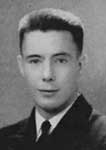 |
|
| 10/27/10:
Died 12/12/80. |
| Music:
"Semper Paratus" (Always Ready), the US Coast Guard Song |
Home
|
Back/allyears |
WWI |
WWII |
Korea |
Vietnam |
Afghanistan/Iraq |
Lyrics
|
Refs/Awards |
Contact
©2025-csheddgraphics All rights reserved.
All images and content are © copyright of their respective copyright
owners. |
|





2013.jpg)






















